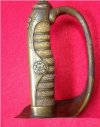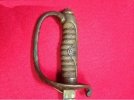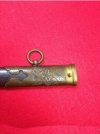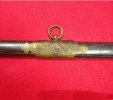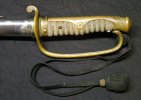My deceased father in law brought this back from WW2. All I've been able to determine is it appears to be a kyu-gunto parade sword?
The emblem on the handle appears off to me, based on other pictures I have seen. I don't have the sword yet and this is the only picture I currently have. It was found just today and I am awaiting receipt. Once I have it in hand I can take more detailed pictures if it will help.
Help appreciated in ID and potentially dating this one.

The emblem on the handle appears off to me, based on other pictures I have seen. I don't have the sword yet and this is the only picture I currently have. It was found just today and I am awaiting receipt. Once I have it in hand I can take more detailed pictures if it will help.
Help appreciated in ID and potentially dating this one.


